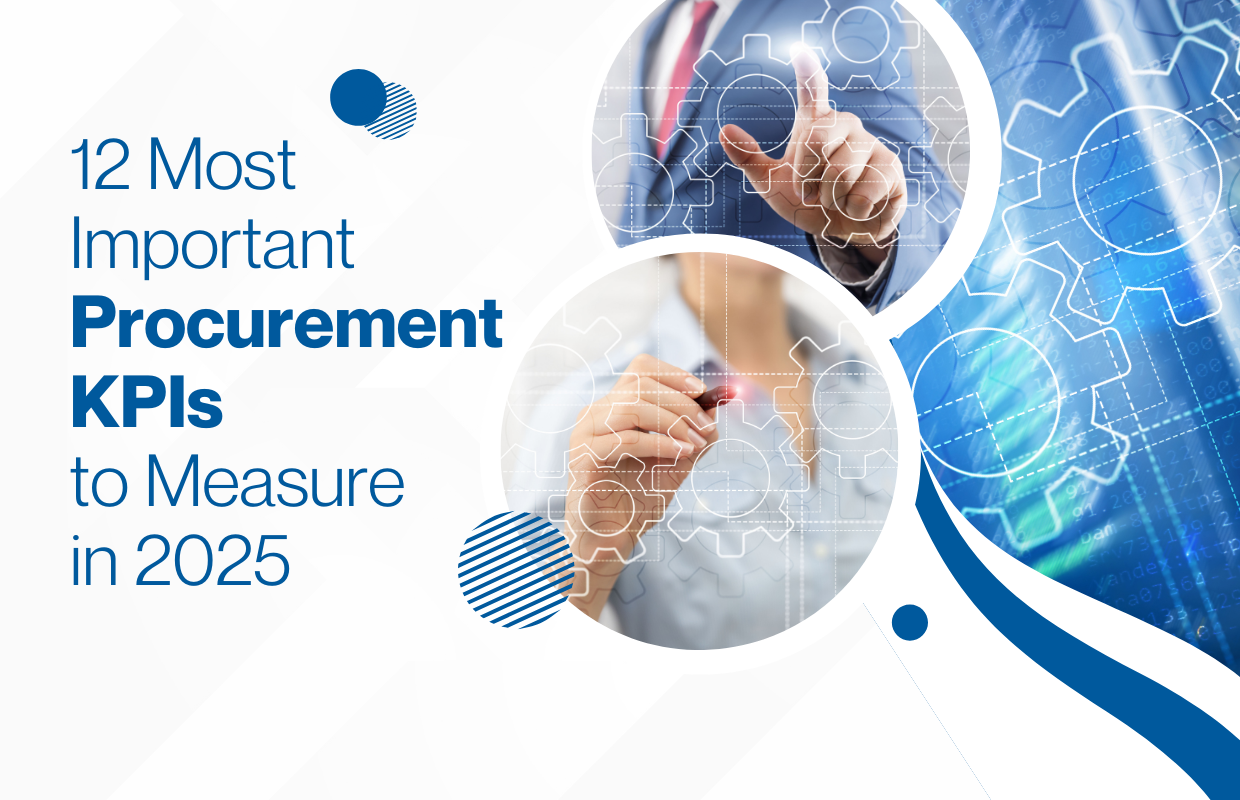
12 Most Important Procurement KPIs to Measure in 2025
Let’s be honest—procurement isn’t what it used to be. Gone are the days of haggling over prices and drowning in paperwork. Today, procurement teams are the unsung heroes driving business growth, safeguarding against risks, and even shaping sustainability goals. But how do you prove your team’s impact in a world where “value” means more than just savings?
The answer lies in KPIs. Not the dry, spreadsheet-bound metrics of the past, but dynamic indicators that tell the story of how procurement fuels your organization’s success. Think of them as your team’s report card—except this one actually matters for your company’s future
In 2025, procurement teams need KPIs that go beyond cost savings and provide a clear, data-backed view of procurement’s strategic contribution. Here are 12 procurement KPIs that truly define success.
Why These KPIs Will Make or Break Your 2025 Strategy
Before we jump into the list, let’s get one thing straight: KPIs aren’t just numbers to impress the CFO. They’re your compass in a chaotic world. Here’s why they matter:
- Cost efficiency that goes beyond “cheaper” to “smarter.”
- Supplier relationships that feel more like partnerships than transactions.
- Risk management that spots fires before they start.
- Compliance that keeps your brand out of headlines (the bad ones).
- Strategic influence that turns procurement into a boardroom MVP.
- Without these metrics, you’re navigating blindfolded.
12 Most Important Procurement KPIs for 2025
1. Cost Savings Achieved
- Why It Matters: Procurement isn’t just about securing the lowest price—it’s about delivering long-term value through strategic sourcing, supplier collaboration, and process improvements.
- How to Improve: Implement AI-driven spend analysis, supplier negotiations, and TCO (Total Cost of Ownership) assessments.
2. Spend Under Management (SUM)
- Why It Matters: The higher your SUM, the more spend is strategically controlled, reducing maverick spend and improving compliance.
- How to Improve: Strengthen contract governance, integrate digital procurement tools, and improve internal procurement policy adoption.
3. Supplier On-Time Delivery (OTD) Rate
- Why It Matters: Late deliveries create a domino effect—delayed production, increased costs, and supply chain instability.
- How to Improve: Use predictive analytics to monitor supplier performance and adjust sourcing strategies in real-time.
4. Procurement Cycle Time
- Why It Matters: A slow procurement process stalls operations and frustrates internal stakeholders.
- How to Improve: Automate workflows, optimize approval hierarchies, and integrate eProcurement solutions for efficiency.
5. Maverick Spend Percentage
- Why It Matters: Off-contract purchasing leads to uncontrolled costs, non-compliance, and missed savings opportunities.
- How to Improve: Implement category management strategies and enhance procurement visibility with real-time dashboards.
6. Supplier Compliance Rate
- Why It Matters: Supplier non-compliance with contracts, industry regulations, or ESG policies can create legal, financial, and reputational risks.
- How to Improve: Conduct regular audits, implement automated compliance tracking, and work with pre-vetted suppliers.
7. Contract Utilization Rate
- Why It Matters: If procurement negotiates contracts but no one follows them, cost savings and negotiated terms are lost.
- How to Improve: Drive internal awareness of procurement policies and increase stakeholder compliance through automated purchase approvals.
8. Procurement ROI (Return on Investment)
- Why It Matters: Procurement must prove its value—savings, efficiencies, risk reduction—against its operational costs.
- How to Improve: Focus on strategic sourcing, cost avoidance strategies, and supplier-driven innovations that reduce total business expenses.
9. Inventory Turnover Rate (ITR)
- Why It Matters: Excess inventory ties up capital, while stockouts disrupt production.
- How to Improve: Use demand forecasting, JIT (Just-In-Time) procurement, and supplier-managed inventory models.
10. Sustainability & Green Procurement Metrics
- Why It Matters: ESG-aligned procurement isn’t optional anymore—it’s a key performance indicator for global businesses.
- How to Improve: Integrate sustainability criteria into supplier selection, measure carbon footprint, and enforce green sourcing policies.
11. Supplier Risk Score
- Why It Matters: A single supplier failure can create costly disruptions. Procurement must proactively manage risks.
- How to Improve: Use real-time risk monitoring tools, diversify supplier bases, and establish contingency plans.
12. eProcurement Adoption Rate
- Why It Matters: Digital transformation is no longer a future trend—it’s happening now. eProcurement enhances efficiency, accuracy, and spend control.
- How to Improve: Increase adoption through user-friendly tools, supplier portals, and data-driven procurement strategies.
Final Thoughts: Procurement KPIs That Drive Results
In 2025, procurement isn’t just about buying better—it’s about proving better. These KPIs will help you showcase how your team:
- Turns risks into resilience
- Transacts into partnerships
- Tactics into strategy
But remember: Metrics are only as good as the actions behind them. Invest in the right tools, foster supplier collaboration, and—most importantly—tie every KPI to your organization’s big-picture goals.
Need Expert Insights on Optimizing Procurement Performance?
Every procurement function is different, and optimizing KPIs requires the right tools, strategies, and insights. If you’re looking to enhance procurement efficiency, streamline sourcing, or leverage AI-driven analytics, get in touch for a consultation with us.
Let’s talk about how you can build a high-performing, data-driven procurement strategy for 2025 and beyond.

